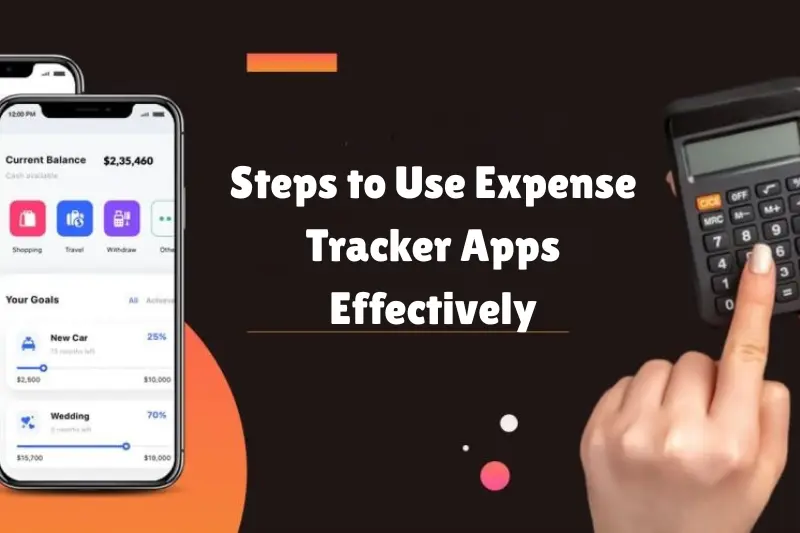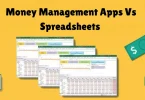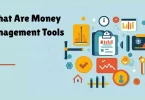Managing your money doesn’t have to be stressful or overwhelming. Learning how to use expense tracker apps effectively can help you gain full control over your finances, track every expense, and save for your goals without feeling confused.
Take the example of Priya, a young professional. She used to wonder where her salary disappeared each month—groceries, transport, dining out, and online shopping seemed to add up fast. Once she started using an expense tracker app and learned how to use expense tracker apps effectively, she could categorize her spending, set budgets, and monitor her savings goals. Within a few months, Priya cut unnecessary expenses and even started saving for her dream vacation—all while keeping money management simple and stress-free.
Expense tracker apps are designed to make financial planning easy and visual, helping anyone make smarter money decisions and develop healthy spending habits.
Why You Need an Expense Tracker App

Think about this for a moment: every month, you spend money on groceries, transport, utility bills, online shopping, dining out, subscriptions, and countless small purchases that often go unnoticed. Trying to remember each transaction manually is not only stressful but nearly impossible.
This is where an expense tracker app becomes invaluable. These apps provide several benefits:
- Track Your Daily Spending: You can log transactions manually or link your bank accounts for automatic tracking. This ensures no expense goes unnoticed.
- Categorize Expenses: Separate your spending into categories like groceries, bills, entertainment, transportation, or personal care. Categorization helps you identify where you might be overspending.
- Monitor Savings Goals: Many apps allow you to set specific targets, like saving for a vacation, an emergency fund, or paying off debts.
- Identify Unnecessary Expenditures: By reviewing reports, you can pinpoint recurring purchases that may not add value to your life.
- Get a Comprehensive Financial Overview: See all your spending in one place and make informed financial decisions.
By leveraging these features, you can detect patterns in your spending, control unnecessary expenses, and even create room to save more effectively.
Choosing the Right Expense Tracker App
Not all apps are created equal. To use an expense tracker app effectively, it’s crucial to select one that fits your lifestyle and financial habits. Some of the most popular and reliable expense tracker apps available in India include:
- Jupiter Money: Ideal for digital banking users. It provides spending insights and personalized tips to manage money better.
- Wallet: Budget Expense Tracker: Helps plan budgets and track transactions effortlessly. Perfect for people who like structured budgeting.
- Day-to-day Expenses: Designed for simple and straightforward daily expense tracking without extra clutter.
- FinArt – Expense Tracker: Offers detailed spending analysis and insights to help you optimize your finances.
- TrackWallet: Expense Tracker: Focuses on visualizing your spending habits using charts and graphs.
- Expenses Manager: Fast & Easy: A quick and intuitive interface for managing everyday expenses efficiently.
- Spending Tracker: Helps you set realistic budgets and avoid overspending in each category.
- Monefy – Budget & Expenses App: Best for users who want to categorize every expense and see a clear visual summary.
- Daily Expense: Expense Manager: A user-friendly option for logging daily expenses quickly and efficiently.
When choosing an app, consider factors like interface simplicity, category options, synchronization with your bank accounts, and reporting features. Most of these apps offer free versions, so you can try a few before settling on the one that works best for you.
Steps to Use Expense Tracker Apps Effectively

Using an expense tracker app effectively requires more than just downloading it—it’s about creating a consistent system. Here’s a detailed step-by-step guide:
1. Set Up Your Account
Start by creating an account in your chosen app. Many apps allow you to connect your bank accounts, credit cards, and digital wallets for automatic transaction tracking. If you prefer, you can also log expenses manually. Take a few minutes to explore the app’s features and complete the initial setup. Some apps offer guided tutorials to help you understand the basics.
2. Categorize Your Expenses
Assign each expense to a specific category such as groceries, dining, transportation, entertainment, bills, and personal care. Proper categorization gives you a clear picture of where your money is going. For example, if you notice that your dining and entertainment expenses are higher than groceries, you can adjust your habits to save more.
3. Track Every Expense
Logging every transaction—no matter how small—is crucial. Many people underestimate how much they spend on small purchases like coffee, snacks, or rideshares. Even these small expenses can add up significantly over time. Consistent tracking ensures your reports are accurate and meaningful.
4. Set Budgets and Goals
Once you have a clear understanding of your spending patterns, set monthly budgets for each category. For instance, you might allocate ₹5,000 for groceries, ₹3,000 for dining, and ₹2,000 for entertainment. Additionally, set savings goals for things like an emergency fund, vacation, or major purchase. Most apps allow you to monitor progress and adjust budgets in real-time.
5. Monitor Your Spending Patterns
Expense tracker apps generate visual reports, graphs, and charts that show your spending trends over weeks or months. Regularly review these reports to understand which categories consume most of your income. For example, if you’re overspending on online shopping, you can take steps to curb that habit.
6. Review and Adjust Regularly
At the end of each week or month, evaluate your financial performance. Are you staying within budget? Are you progressing toward your savings goals? Adjust your budgets or spending habits as needed. This review process ensures you remain in control and make smarter financial decisions.
You may also like to read this:
10 Proven Steps on How To Build Wealth From Nothing In 2025
Why Financial Discipline Matters For Wealth | 7 Key Benefits
12 Wealth Building Habits of Successful People 2025
What Are Money Management Tools? A Simple Guide
7 Types of Budgeting Tools For Smarter Money Management
Tips for Maximum Efficiency
To get the most out of your expense tracker app, follow these tips:
- Stay Consistent: Make it a daily habit to log every expense. Consistency is the key to accuracy.
- Avoid Guesswork: Enter the exact amount for each transaction. Small expenses can significantly impact your monthly budget.
- Use Notifications and Alerts: Enable reminders for logging expenses and alerts for overspending. This will keep you accountable.
- Sync Multiple Accounts: If you have multiple bank accounts, wallets, or cards, sync them to get a complete overview of your finances.
- Set Realistic Goals: Don’t aim for drastic savings overnight. Small, achievable targets are more sustainable and motivating.
- Review Reports Regularly: Monthly reviews can help identify overspending trends, saving opportunities, and areas to cut costs.
Advanced Strategies to Maximize Your Expense Tracker App
Once you’ve mastered the basics of tracking and budgeting, there are advanced strategies that can make your expense tracker even more effective:
1. Automate Recurring Expenses
Most apps allow you to set recurring transactions for regular expenses like rent, utilities, subscriptions, or EMI payments. Automating these ensures they are always accounted for and helps prevent accidental overspending.
2. Use Cash vs. Card Wisely
Track your spending for both cash and card separately. This helps you identify where you tend to overspend. For example, using cash for discretionary purchases like dining or entertainment can help limit impulsive spending.
3. Leverage Visual Insights
Expense tracker apps often provide pie charts, bar graphs, or monthly summaries. Use these visuals to quickly identify spending patterns. For instance, you might notice that transport costs spike on certain weeks, prompting you to plan rides or use public transport more efficiently.
4. Analyze Trends Over Time
Tracking is not just about recording expenses today—it’s about learning for tomorrow. Compare your spending month-over-month to identify positive changes and areas needing improvement. For example, if you reduced dining out by 20% last month, recognize it as a win and keep building on it.
5. Integrate Savings Challenges
Some apps allow you to gamify saving. You can create challenges like “save ₹500 this week” or “limit dining out to ₹1,000 this month.” This turns financial management into a fun and motivating activity.
6. Share and Collaborate
If you manage household finances or are sharing expenses with a partner, choose apps that allow shared tracking. Collaborative tracking ensures everyone is on the same page and prevents misunderstandings about money.
Real-Life Example: How an Expense Tracker App Can Transform Your Finances
Let’s take the example of Riya, a working professional in Mumbai. Before using an expense tracker, Riya often wondered where her salary went by the end of each month. She had little savings and felt stressed about finances.
After she started using Monefy – Budget & Expenses App, she followed these steps:
- Categorized all her expenses into groceries, transport, subscriptions, dining out, and personal care.
- Set monthly budgets for each category.
- Logged every expense, including small daily purchases.
- Reviewed weekly reports to adjust her spending habits.
Within three months, Riya noticed she was spending 25% less on dining out and saved enough to start an emergency fund. The app helped her gain clarity, control, and confidence in her financial decisions.
Motivational Tips to Stay Consistent
Staying consistent with an expense tracker can be challenging at first. Here are some tips to make it a habit:
- Set a Daily Reminder: Dedicate 5–10 minutes every day to log your expenses. Treat it like brushing your teeth—non-negotiable and routine.
- Celebrate Small Wins: Reward yourself for staying within budget or reaching savings goals. Positive reinforcement builds lasting habits.
- Start Simple: If tracking every tiny expense feels overwhelming, begin with major categories and gradually include smaller transactions.
- Visualize Your Goals: Keep your savings goals visible, like a picture of your dream vacation or a chart showing your progress. Motivation drives consistency.
- Use Multiple Devices: Sync your app on both phone and tablet so you can log expenses anytime, anywhere.
The Long-Term Benefits of Using Expense Tracker Apps
By using an expense tracker app effectively, you’re not just keeping tabs on your spending—you’re building a foundation for financial freedom. Over time, you will:
- Gain better control over your money
- Avoid unnecessary debt
- Develop disciplined spending habits
- Achieve short-term and long-term financial goals
- Reduce stress about money and increase confidence in financial decisions
Expense tracker apps are not just tools—they’re partners in your journey to smarter money management.
Final Thoughts
Learning how to use expense tracker apps effectively is more than just a productivity hack—it’s a habit that can truly transform your financial life. By consistently tracking every expense, categorizing your spending, setting realistic budgets, monitoring savings goals, and reviewing your patterns regularly, you gain complete control over your money.
Whether you’re using Jupiter Money, Wallet, Monefy, or any other top-rated app, the real keys to success are consistency, self-awareness, and commitment. Start today, log every rupee, and watch your savings grow. Financial freedom isn’t just a dream—it’s a habit, and mastering how to use expense tracker apps effectively is your roadmap to achieving it.
FAQs: How To Use Expense Tracker Apps Effectively
1. What is an expense tracker app?
An expense tracker app is a digital tool that helps you record, categorize, and monitor your spending. It allows you to track daily expenses, set budgets, monitor savings goals, and get a clear overview of your financial health.
2. Do I need to link my bank account to use an expense tracker app?
Not necessarily. While linking your bank account allows automatic tracking of transactions, you can also manually log all your expenses. Manual entry works well for cash transactions or people who prefer not to connect their accounts.
3. Which expense tracker app is best for beginners?
Apps like Day-to-day Expenses or Daily Expense: Expense Manager are ideal for beginners. They have simple interfaces and focus on basic tracking without overwhelming users with too many features.
4. Can an expense tracker app help me save money?
Yes! By tracking your expenses, categorizing them, and setting budgets, these apps help you identify unnecessary spending and redirect money toward savings or important goals.
5. How often should I log my expenses?
It’s best to log expenses daily for the most accurate results. Even small purchases like coffee or snacks should be recorded, as they can add up over time and impact your budget.



